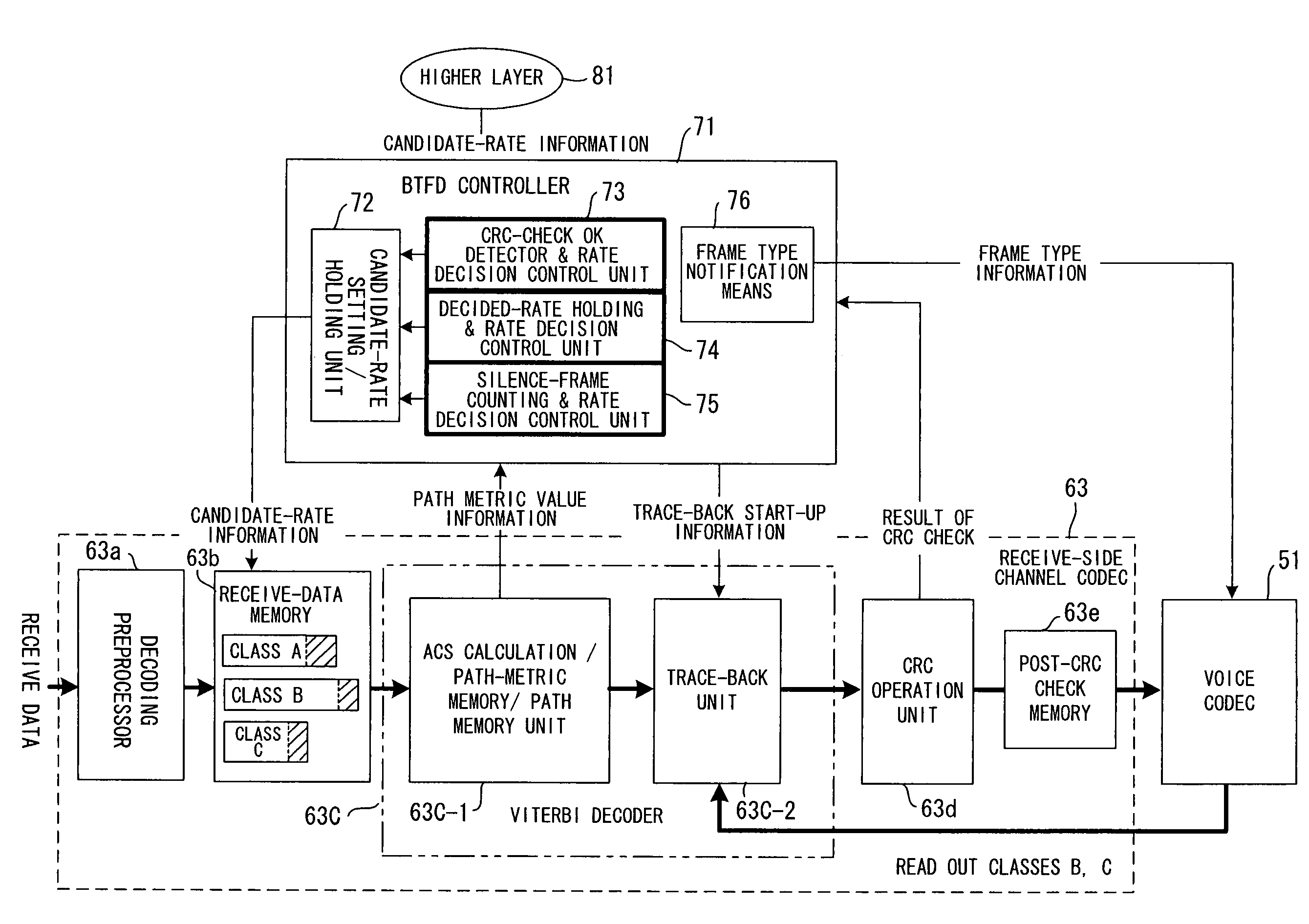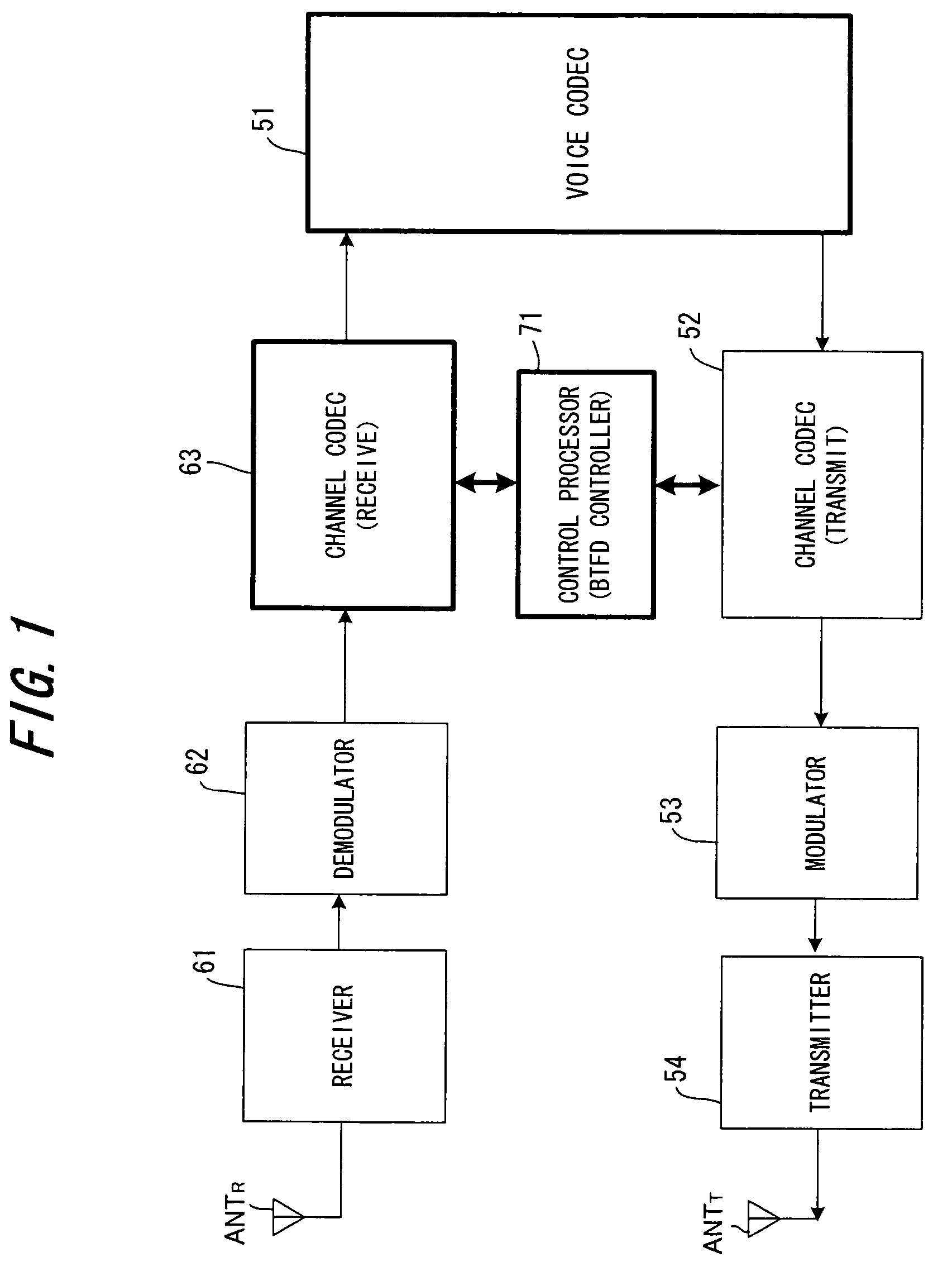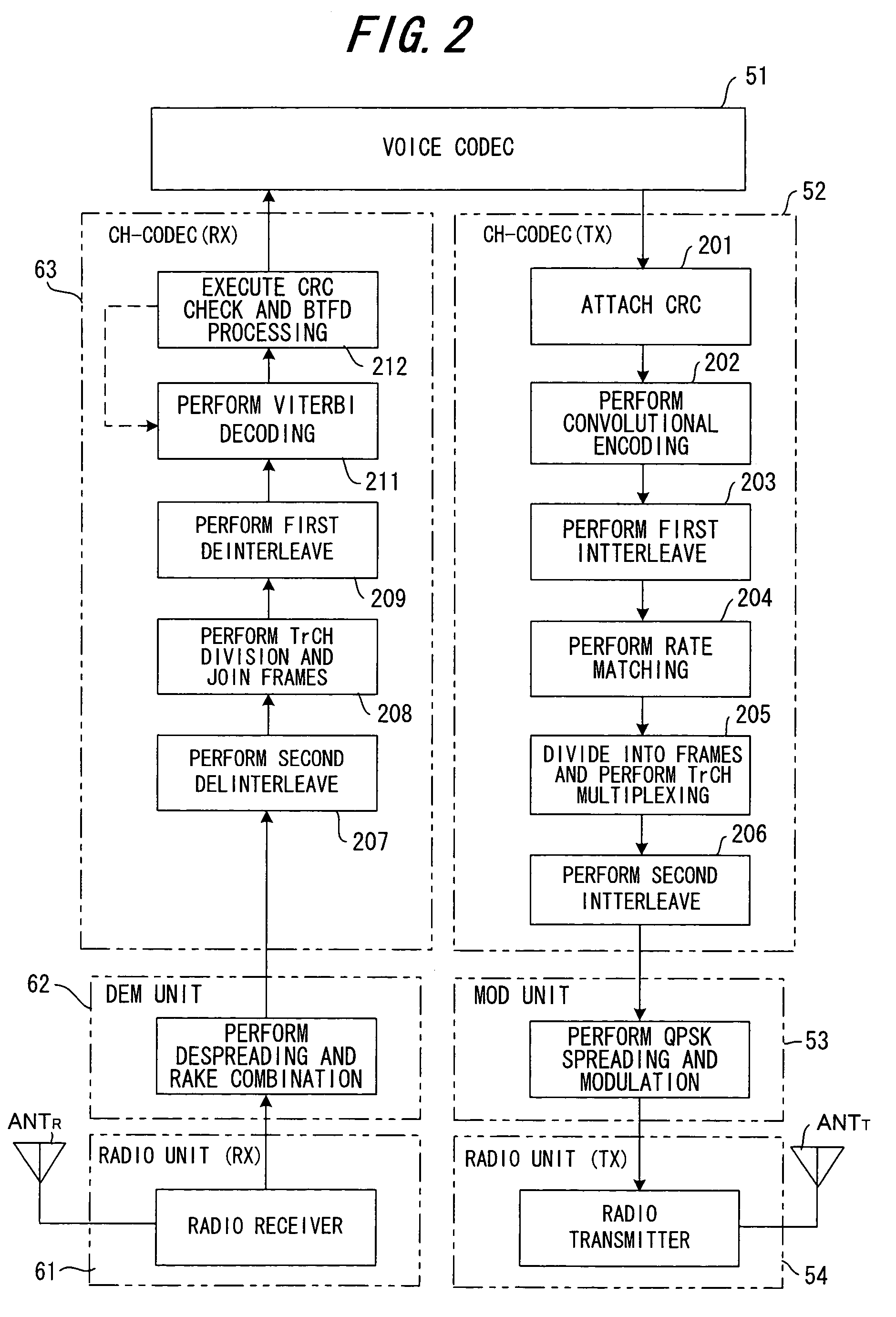Receiving apparatus and receiving method in CDMA communication system
a communication system and receiving apparatus technology, applied in multiplex communication, coding, code conversion, etc., can solve the problems of no good crc check bit rate and low bit rate, so as to reduce the amount of processing involved in btfd processing, reduce the number of memories used, and reduce the effect of memory us
- Summary
- Abstract
- Description
- Claims
- Application Information
AI Technical Summary
Benefits of technology
Problems solved by technology
Method used
Image
Examples
first embodiment
(E) First Embodiment of BTFD Processing According to the Present Invention
[0123]FIG. 6 is a flowchart of BTFD processing according to a first embodiment of the present invention. According to BTFD processing according to the first embodiment, when it is detected that a CRC check is acceptable, the BTFD processing is halted from this moment onward, the number of bits of voice code of each class is decided based upon the bit rate of each class in a bit-rate combination that prevails when the CRC check is acceptable, the voice code of each class is extracted from receive data based upon the number of bits and the voice code is input to a voice codec.
[0124]Since bit-rate candidates (FIG. 10) are specified from within a host application 81, the BTFD controller 71 assigns numbers in order of increasing bit rate (number of bits per unit time) of Class A in the manner nend=1, 2, 3, . . . (step 301). Next, initialization is performed as follows: nend=1, Smin=D, nend′=0 (step 302).
[0125]There...
second embodiment
(E) Second Embodiment of BTFD Processing According to the Present Invention
[0137]FIG. 7 is a flowchart of BTFD processing according to a second embodiment of the present invention. Processing identical with that of the processing flowchart of the first embodiment is denoted by like step numbers.
[0138]According to the second embodiment, the bit-rate combination candidate prevailing when an acceptable CRC check is obtained and the bit rate of Class A has been definitely determined is held for the period of the transmission time interval TTI and succeeding BTFD processing following elapse of TTI is started from the bit rate of Class A in the bit-rate combination that has been stored.
[0139]Ordinarily, in the case of a voice call, it is usual for a voice activity segment (a rate of 12.2 kbps) and a silence segment to each continue in units of tens of seconds. The unit of the TTI in voice code is 20 ms. This means that the intervals of changes in the voice activity segment / silence segment...
third embodiment
(F) Third Embodiment of BTFD Processing According to the Present Invention
[0145]FIG. 8 is a flowchart of BTFD processing according to a third embodiment of the present invention. Processing identical with that of the processing flowcharts of the first and second embodiments is denoted by like step numbers. According to the third embodiment, silence states are counted and, if silence states are detected seven times in succession in the past, then, in the next TTI, BTFD processing is started from the bit rate of background noise. The reason for this is that in accordance with the specifications of a 3GPP voice codec, it is defined that one segment of background noise is inserted in a silence state of 8×TTI. If this arrangement is adopted, the amount of processing involved in BTFD processing can be reduced.
[0146]First, a silence-frame count U is initialized before reception of voice starts. If voice reception starts and the rate-determined flag is off (step 411), BTFD processing is exe...
PUM
 Login to View More
Login to View More Abstract
Description
Claims
Application Information
 Login to View More
Login to View More - R&D
- Intellectual Property
- Life Sciences
- Materials
- Tech Scout
- Unparalleled Data Quality
- Higher Quality Content
- 60% Fewer Hallucinations
Browse by: Latest US Patents, China's latest patents, Technical Efficacy Thesaurus, Application Domain, Technology Topic, Popular Technical Reports.
© 2025 PatSnap. All rights reserved.Legal|Privacy policy|Modern Slavery Act Transparency Statement|Sitemap|About US| Contact US: help@patsnap.com



